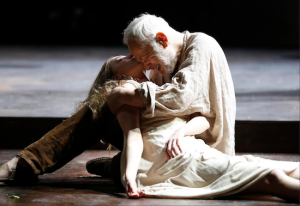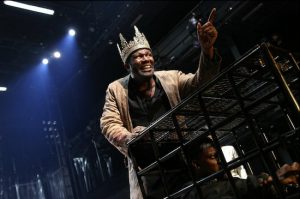
‘An Octoroon’ thrills at Theatre for a New Audience

Our borough’s got its very own run of a dazzling, dizzying play about slavery and hopeless love — and the art of play-making — that won an Obie Award last year for Best New American Play when it was shown in Manhattan.
Brace yourselves, Brooklyn. You’re in for a wild, and rewarding, roller-coaster ride.
The Theatre for a New Audience production of Soho Rep’s “An Octoroon,” which opened Thursday, Feb. 26, will have you laughing, flinching and in tears in quick succession, again and again.
By the time prodigiously talented playwright Branden Jacobs-Jenkins is done with you, you’ll be picking cotton out of your hair. Literally.
TFANA’s Polonsky Shakespeare Center, which opened in fall 2013 in Downtown Brooklyn’s BAM Cultural District, is devoted to staging the Bard’s works and other classics — and the occasional modern play, if it’s a big deal.
“An Octoroon” fills the bill as a big deal — it’s a funny, disturbing whirlwind of a play about the antebellum South and our present-day American selves as well.
In reaction to its run last year at Soho Rep’s theatre in TriBeCa, The New York Times named “An Octoroon” a Critics’ Pick. It was on the Top Ten 2014 Best Theatre Lists of The New York Times, Time Out New York and the Guardian.
Other plays by Jacobs-Jenkins, a 2006 Princeton grad who is under commissions from Lincoln Center/LCT3 and the Manhattan Theatre Club, include “Neighbors,” “Appropriate” and “War.”
As his jumping-off point for “An Octoroon,” Jacobs-Jenkins uses a melodrama by an Irish playwright, Dion Boucicault, that takes place at a Louisiana plantation called Terrebonne. It opened in New York City’s Winter Garden Theatre in 1859.
Seven acting companies took “The Octoroon,” as Boucicault’s work is called, on tour. It was second in popularity only to the famed “Uncle Tom’s Cabin.”
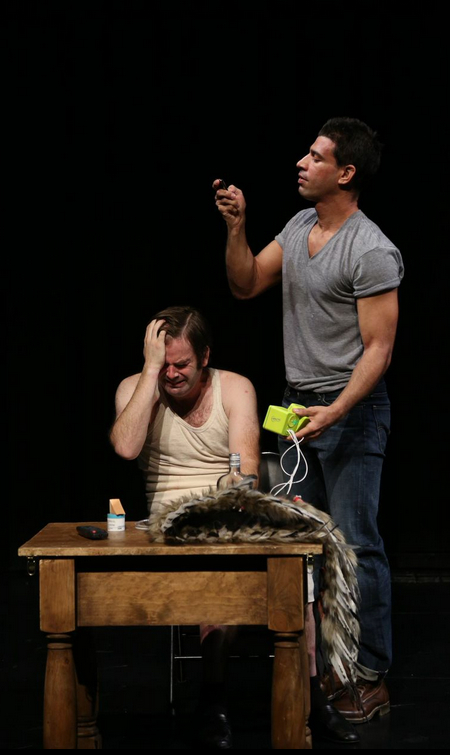
Jacobs-Jenkins’ play begins in the here and now — with a lone man in his underwear, played by a terrific Austin Smith.
He talks about being a black playwright and dealing with “low-grade depression.” Before you know it, he’s dabbing whiteface makeup on his visage and preparing to take on the roles of two Caucasian characters.
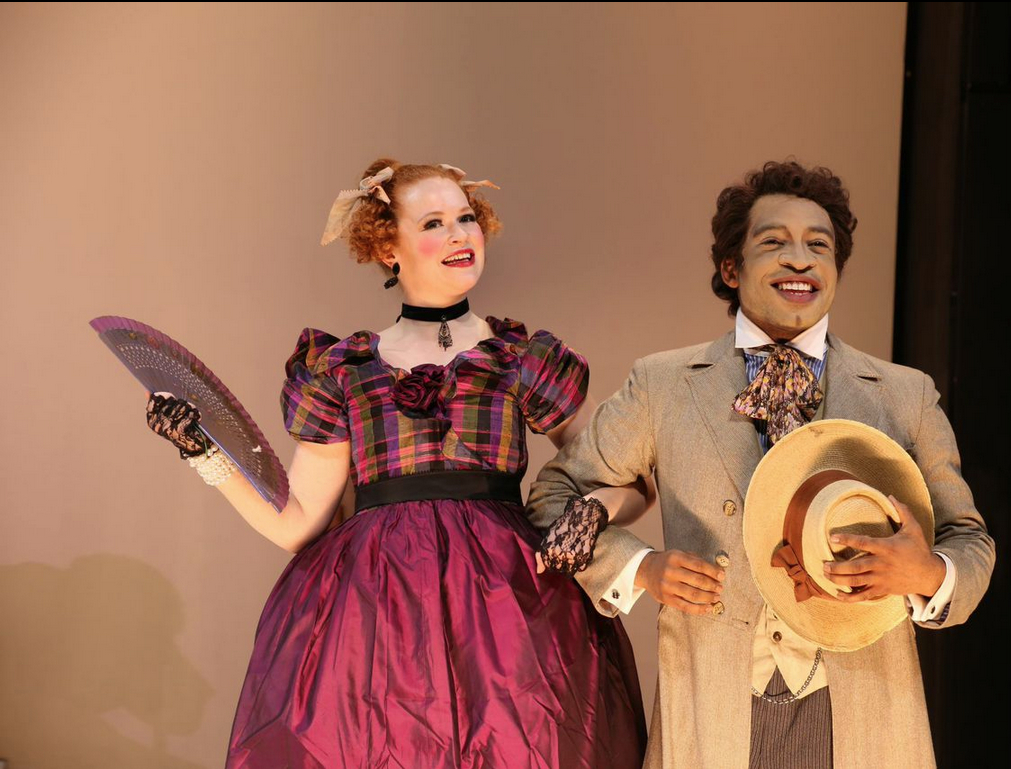
Later in the action, those white characters — George, the dead plantation owner’s nephew, and M’Closky, the evil overseer — get into a knock-down, drag-out knife fight. Smith acts out both sides of the brawl to hilarious effect.
In his role as the playwright, Smith is identified as BJJ, a stand-in for Jacobs-Jenkins.
The real-life writer is present in the theater. He shows up as Captain Ratts, who sits among the audience and bids during a slave auction.
Possibly Jacobs-Jenkins is also the person costumed as a bug-eyed Br’er Rabbit who steps onstage periodically for staring contests with the audience. The creature is wordless and weird, and gets lots of laughs.
In a Village Voice story, Jacobs-Jenkins talked about being the guy in the bunny suit in the 2014 production of the play.
Yet another playwright is present and accounted for.
Boucicault, back from the dead, is on hand to bemoan the fact that nobody remembers him and grieve drunkenly because the Winter Garden burned down long ago.
“There was a time when I ran this town,” he says with wistful bombast.
He is ably played by Haynes Thigpen, who also appears in redface makeup as a Native American, Wahnotee, and has a third role as a slave auctioneer.
A luminous Amber Gray plays the title character, Zoe, who is one-eighth black.

She speaks the quaint language of old-time melodrama. But she’ll break your 21st-Century heart, from the moment she appears among the audience on an upstairs floor of the theatre, singing sadly about being “just a belonging, so easily disposed of.”
Later, in a dramatic moment, she tells George why it is against the law for them to marry in pre-Civil War America.
“Of the blood that feeds my heart, one drop in eight is black,” she says. “Bright red as the rest may be, that one drop poisons all the rest.”
Sarah Benson, in her Director’s Note about “An Octoroon,” speaks of Jacobs-Jenkins’ “fierce and endlessly inventive writing.”
Inventive, indeed. The dialogue is full of surprises, whether it’s slave women Minnie and Dido (played by funny, fabulous actresses Maechi Aharanwa and Pascale Armand) gossiping about the huge size of their dead master’s penis or Southern belle Dora (an equally superb Mary Wiseman) describing the “barroom style” of wooing to which she is accustomed as “love lined with drinks, cold, chapped caresses, sighs tinged with tobacco.”
The play’s run has been extended through March 15. See tfana.org for ticket availability. The theatre, which was designed by highly regarded architect Hugh Hardy, is located at 262 Ashland Place.
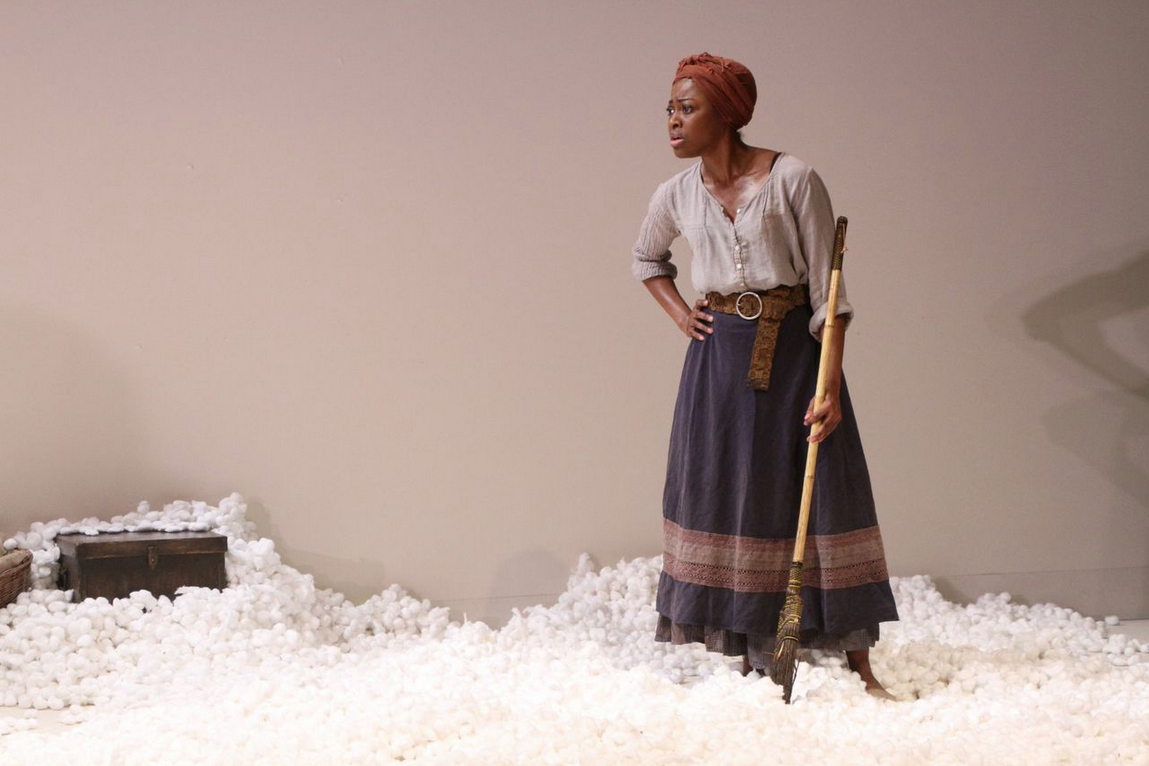
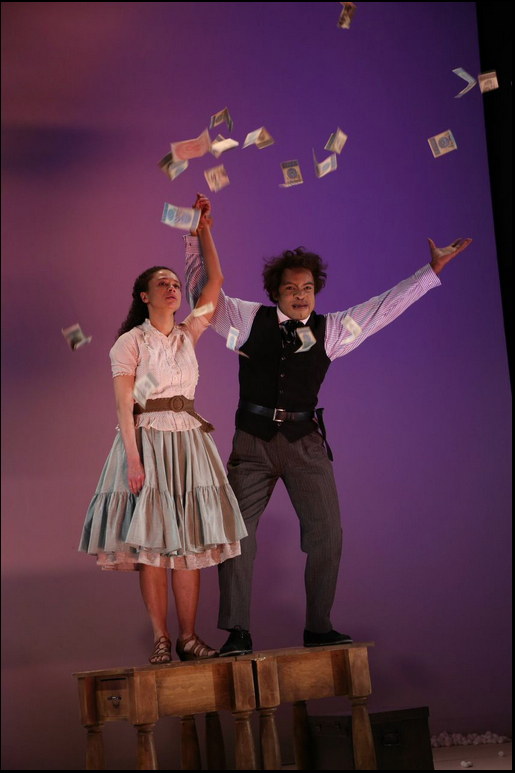
Leave a Comment
Leave a Comment



